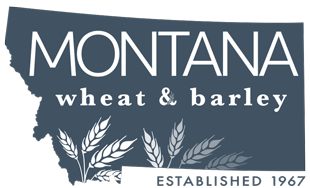As Board Member Terry Angvick and Executive Vice President Kent Kupfner prepare to travel to Taiwan in a few weeks, understanding Taiwan’s specific quality needs is a critical component to the visit. Kent shares a brief summary of Taiwan’s imports, wheat uses and consumption trends.
Taiwan – A Loyal US Wheat Customer, by Kent Kupfner, Executive Vice President
This summer, the Montana Wheat and Barley Committee (MWBC) was fortunate to host a trade team from the Taiwan Flour Miller’s Association (TFMA). The team (which included representatives from five of the largest flour mills in the country) was in Montana to get a firsthand look at current crop conditions, receive market updates and meet with representatives of the grain industry. The agenda was jam-packed with tours of commercial grain elevators, farm visits and a stop at the State Grain Lab. While the TFMA team was visiting Big Sky Country, the Association purchased 56,000 metric tons (2.1 million bushels) which shipped in August!
U.S. Dominates Taiwan Wheat Imports — and Montana Dominates Hard Wheat
Taiwan has a population of 23.5 million and is a loyal and consistent buyer of U.S. wheat. Given the country’s limited domestic production, annual purchase volumes are approximately 1.3 million metric tons (47.8 million bushels). Year-over-year, 80-90 percent of this wheat volume originates in bulk vessels of U.S. origin, with the balance primarily shipping in containers from Canada and Australia.
TFMA was founded in 1952 and currently includes 15 active members with flour mills located throughout the country. The TFMA procurement group is responsible for over 98 percent of all U.S. wheat imports which includes three classes: Hard Red Spring, Hard Red Winter and Soft White Winter. Hard Red Spring represents the largest portion (56 percent), followed by Hard Red Winter (33 percent) and Soft White Winter (11 percent). Most of the hard wheat bushels are produced by Montana’s wheat farmers.
Taiwan is one of the most quality driven buyers in the world, with some of the most challenging specifications for exporters to meet. TFMA purchases guaranteed 14.5 percent protein Dark Northern Spring (DNS), which must be a minimum 75 percent DHV. The HRW must be minimum 12.5 percent protein.
Uses of Imported Wheat
Taiwan uses the imported wheat to make flour products, representing 56 percent of usage. They produce products such as raw, cooked, dried and instant noodles. Steamed bread, steamed buns and dumplings are also on the product list. Bakery products such as breads, sweet rolls, French breads, biscuits, cakes and pastries comprise another 32 percent. The balance of the wheat supplies are used to make other gluten-based foods and aquaculture feeds.
The flour marketplace is comprised of many players such as small bakeries, large scale baking plants, chain store and mall bakeries, frozen dough manufacturers and biscuit plants. Small, traditional bakeries comprise 77 percent of flour demand, with 23 percent going to larger, chain store bakeries. There are over 8,000 small bakeries in Taiwan!
Consumption Trends
Even though the Taiwan government encourages rice consumption, the per capita consumption of wheat has been steadily growing since the early 1970s, while per capita rice consumption has fallen dramatically during the same time period. Wheat consumption began to exceed rice consumption starting in 2008.
Much like many Asian countries such as Japan, Korea and China, the population of Taiwan is aging rapidly and the working age population is declining. This suggests that the growth in wheat consumption is leveling out and driving changes in consumer preferences. The Taiwanese consumer is very quality conscious. Health and nutrition considerations and “clean labels” with fewer additives are important. The consumer is willing to pay a premium for quality and freshness. Urbanization and a busier lifestyle are driving demand for fast and convenient food choices.
Taiwan represents a very reliable and consistent market for high quality wheat such as that grown in Montana and we are thankful. Montana’s wheat growers and the grain industry remain committed to meeting this demand on a reliable and consistent basis.

